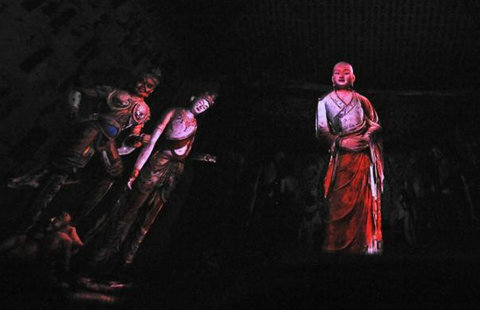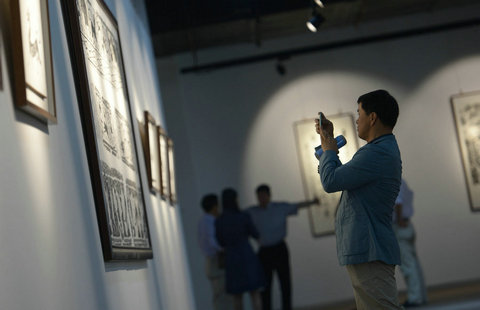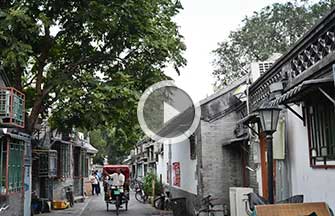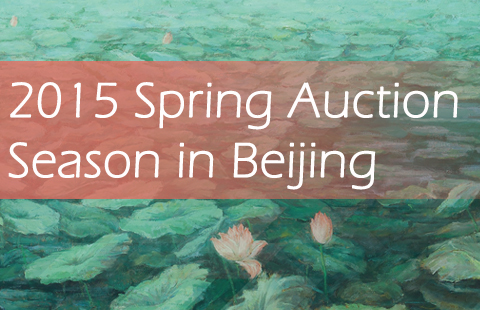Pictorial book of Indian poet fosters bilateral ties
By Chitralekha Basu ( China Daily ) Updated: 2012-06-05 10:03:48Rabindranath Tagore in Shanghai, a Chinese-English compendium of rare images of the Indian poet's visits to China in the 1920s, is, in fact, a lot more than what the title suggests. Its ambit stretches well beyond Tagore's three trips to Shanghai in 1924 and 1929.
The book, meticulously put together by Shanghai Municipal Archives with support from the Indian Consulate in Shanghai, offers a birds' eye-view of Tagore's discovery trail across China, by publishing, for the first time, images taken in Beijing, Hangzhou, Nanjing and Jinan, as well as scarcely-seen photos shot in Shanghai during his much-publicized, if somewhat controversial, 1924 visit.
It also includes cover images of the earliest-published Chinese translations of Tagore's work, including pages from Xin Qingnian (New Youth) magazine, edited by Chen Duxiu, in which four poems by Tagore, written originally in Bengali, appeared in English (Tagore's own) and Chinese translations in 1915.
By the time Tagore made his first visit to China, Chen, a leading light of the fledgling but already-influential Communist Party of China, founded in 1921, was not so enamored of Tagore's work any more, and was especially skeptical of his message.
In the wake of the New Culture Movement, following the upsurge of strong nationalist fervor and idealization of science and democracy - seen essentially as Western imports - Tagore's denunciation of Western materialism did not go down too well with the newly-indoctrinated Leftist intellectuals.
Tagore's urging the Chinese to reconnect with their spiritual core was seen as regressive and anti-rational, his endorsement of traditional wisdom and ancient literary texts appeared reactionary.
In some of the critical literature being circulated at the time, Tagore was seen as advocating a revival of the retrogressive practices of keeping concubines and foot-binding.
While at least one article in the book - by Xing Jianrong - recapitulates that moment of discontent, the others - by the poet Zhao Lihong and the academic Tan Chung, an expert on Sino-Indian relations - are more focused on the strong emotional connect that Tagore had established with China, a bond that throbbed like a live wire inside him until the very end.
A few days away from his death in 1941, Tagore wrote a poem in which he remembered his time in China.
"A Chinese name I took, dressed in Chinese clothes
This I know in my heart
Wherever I find friends, there I am born anew."
Such forging of friendships is the theme running through this anthology of archival photographs, strikingly luminous paintings and sketches by the poet and a few totally captivating portraits by the eminent Chinese painter Xu Beihong.
Primarily meant to serve as a pictorial documentation of Tagore's time spent in Shanghai - a total of 13 days on three visits - the book ends up being a study in fostering ties between people.
In several images, Tagore is seen surrounded by a multi-cultural, multi-ethnic group. In a photo taken at a Shanghai reception, for instance, Tagore, in his signature ankle-length robe and flowing white beard, is surrounded by Chinese both the cheongsam-clad, goatee-wearing kind, as well as those in three-piece suits.
Tagore's reason for coming to China went beyond wanting to rejuvenate cultural and historical ties between the two countries. It was his dream to have China and India "show an example of the amity and harmony of friendship", for the world to follow.
Reviving China-India ties, for him, was a step toward bringing the world community closer.
This book, which recounts that story in a nutshell, could serve as a diving board, leading to deeper engagement with the subject.
basu@chinadaily.com.cn
|
|
|
|
|
|
|
|






















 Raymond Zhou:
Raymond Zhou: Pauline D Loh:
Pauline D Loh: Hot Pot
Hot Pot Eco China
Eco China China Dream
China Dream China Face
China Face





